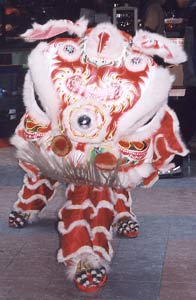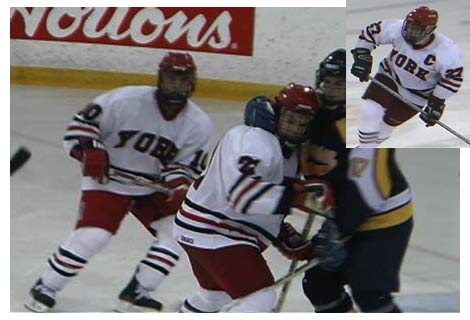|
|||||||||||||||||||||||||||||
|
|
|||||||||||||||||||||||||||||
| | |
| | VOLUME 32, NUMBER 12 | WEDNESDAY, FEBRUARY 20, 2002 | ISSN 1199-5246 | |
| | |||
|
 |
By Cathy Carlyle 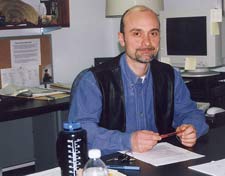
Paul Mayol You've seen buildings emblazoned with banners proclaiming "ISO 9000" or ISO 1400". You know the banners must mean something important or the companies would not splash them across their edifices. And did you know that certain departments at York are registered to ISO 9001:2002? "We're the first university-based finance division to achieve registration to the ISO 9001:2002 Quality Management Standard, " said Paul Mayol, York's ISO project coordinator. It took two years of hard teamwork on the part of staff and management in the Office of Budgets and Planning, Office of the Comptroller, ITS, Purchasing and Contract Administration, and Treasury. But what does ISO 9000 mean? The initials themselves refer to an international organization for standards established in 1947 to encourage industry to develop standards voluntarily, he said. The different numbers you see after the initials refer to the precise criteria met by a variety of businesses. The coveted rating is given by outside registrars only after an independent process audit provides evidence that the organization has implemented a quality management system and achieved consistency in documented procedures. "The rating doesn't necessarily mean that company's services or products are better than one that is not registered. But it does mean that the company uses verifiable, consistent procedures," said Mayol. "Most companies undergo ISO registration to gain a competitive advantage because customers feel a certain sense of trust when they deal with those suppliers, or to gain access to a specific international market." York's ISO 9001:2002 registration means that the Finance Division has met certain global standards for quality management systems. "We can demonstrate that we have a consistent approach to the delivery of services and meet acceptable quality levels. But we did not undertake this project to have a competitive advantage. " What does York gain by its Finance Division having an ISO registration? It gives it accountability, transparency and structure - more control over core business processes. "Ultimately, we wanted to provide a quality service that our community expects from us," said Mayol. To achieve the ISO 9001:2002 standard, the Finance Division had to identify its customers and service needs clearly, as well as industry standards and any legal or regulatory requirements that affect the service it provides. The division's customers are the staff, board committees, senior management, faculty and students, external vendors (the companies York does business with), agencies, government and so on. Next, processes were painstakingly documented in the following areas: budget and budget planning, accounts payable and receivable, research accounting, external financial reporting, purchasing, project and cash management, trust and endowment and courtesy accounts. What was the staff's reaction when notified of the ISO registration bid? "The initial response was, 'Oh no, not another flavour of the month project.'," said Mayol. "We had to convince management and staff that there were real benefits for ourselves and our customers. Ensuring buy-in from staff and management was instrumental, because implementation of the standard is possible only if a team approach is used." There are considerable benefits to those who work in an environment that has an ISO registration, and Mayol discussed them with Jim Streb, then president of the York University Staff Association. There is emphasis on training and to this end, each department involved in the project analyzed what their staff responsibilities were and the training they needed to carry them out. "There is no guessing about responsibilities because authorities, process objectives and targets are well-defined and monitored." And the benefits are -? "Staff can feel confident that issues such as training are formally addressed. In fact, training needs and responsibilities are well-documented." Mayol said this type of registration shows the world that the Finance Division is more accountable to its customers, its processes transparent and its goals more focused. He would like to see the current registration in the division expand to other areas within the vice-president finance and administration's portfolio. "In fact, I hope we will be a catalyst for other administrative areas around the University."
| ||
|
 |
By Michael Todd
A GLANCE AT THE FEBRUARY ISSUE OF Harper's Magazine: "The profit motive in higher education". Nick Bromell, a professor of English at the University of Massachusetts at Amherst, waxes sarcastic about the corporatization of American universities, grade inflation and the almighty buck. Dismissing the notion that, as a professor, his job is to help students think for themselves, he corrects himself: "For years my perspective on the world of higher education was pathetically narrow compared with the sweeping views commanded by higher-education experts working for corporate-funded think tanks and corporations." The profit motive and its corollary, the push for maximum efficiency, make perfect sense to Bromell - now that he, too, realizes that small classes, electricity for dorms, walks to and fro on campus, and so forth are pointless and wasteful. "Don't you see it?" he inquires. "The beauty of the quest for more efficiency is that it has no endpoint. We could devote our whole lives to it." And so we should, he urges, so that corporate interests can take the helm. Bromell ironically applauds that idea: "As its reward for helping us through this difficult process, the education-business community" - which currently receives a measly two per cent of the annual $200-billion garnered by higher education in the US each year - "would finally get what it obviously deserves: 98 per cent of the pie, not two." The article is not available online, but information about the magazine may be found at www.harpers.org/ . * * * THE GOVERNMENT OF YEMEN has begun an orchestrated campaign of arrests and deportation of foreign students studying Islam at illegal "madrassas," religious institutions of higher education, throughout the country. chronicle.com/daily/2002/01/2002012809n.htm . * * * THE FRESHMAN YEAR is taking a real toll on American students' physical and mental health. Colleges now have a better sense of that cost, based on the results of a new survey. A wealth of statistics from The Chronicle survey are available at chronicle.com/weekly/v48/i21/21a03501.htm . * * * A RESEARCH TEAM at the University of Oxford is seeking millions of volunteers to use their computers to help in the search for a treatment for anthrax. chronicle.com/free/2002/01/2002012801t.htm . * * * A GLANCE AT THE WINTER ISSUE of Common Knowledge: "When intellectual disputes get ugly". Intellectual conflict helps make the intellectual world what it is, writes Randall Collins, a professor of sociology at the University of Pennsylvania. This is true in part because opposition among rival philosophical positions shapes the very content of those positions. "To stay at the forefront of intellectual action, one must be attuned to where the lines of opposition are shifting," he writes. So if intellectual conflict determines how new ideas are shaped, what determines the level of acrimony? Collins notes that in the intellectual community there are often more good ideas generated than the "attention space" allows for, and therefore the people who are ignored "often manifest the kind of acrimony that we may call the bitterness of the supernumeraries." Acrimony is most likely to occur in the "middle aged" period of a person's career, when attacks must be made on those who are currently eminent, he writes. There is also the acrimony of the young against the older generation, "the attack on one's teachers". But it is the "entanglement of intellectual life with religious politics" that appears to bring the bitterness of disputes to a peak, he says. There can be harmony among intellectuals of different religious factions when each side is thrown together "into a common community," he says. For example, conflicts among Muslim and Jewish intellectuals in the Middle East can be quite "vociferous". But the same factions, meeting at universities in America or Britain, often find that "the shrillness of discourse" descends to a more normal level of acrimony, he writes. The article is not online, but information about the journal is available at www.dukeupress.edu/ck/index.shtml . * * * BOWING TO PRESSURE from female doctors, Singapore's government has said it will reconsider a long-standing quota system that favours male applicants over higher-scoring female applicants for admission to medical school. chronicle.com/daily/2002/01/2002012507n.htm . * * * THE IMPACT OF 'TASINI: A US Supreme Court decision last year led publishers to make massive purges of newspaper databases, rendering them unreliable for many scholars. chronicle.com/weekly/v48/i20/20a02901.htm .
| ||
|
|
New team manages risks at York By Cathy Carlyle 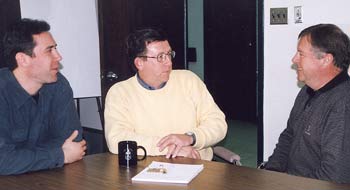
From left: Steve Pottle, Mike Morris and Dave Breckles One of the most diverse and challenging environments for risk managers today is on a university campus. The minute one risk is recognized and dealt with, a new one presents itself.That's where the risk management team of Mike Morris, Steve Pottle and Dave Breckles comes in. This new team was formed after President Lorna R. Marsden and VP Finance and Administration Phyllis Clark identified a strategic chance to allow York to manage risk more effectively and broadly. In November 2000, the Insurance and Risk Management Department was born within the Finance Division of the University. Its mandate is threefold: help provide a safe and secure environment for faculty, staff and students; protect York's assets; and preserve the reputation of the University. The new team takes a proactive approach. Morris, Pottle and Breckles work with the York community to identify and manage the risks. They aim to mitigate the severity of potential serious financial consequences to the University. Increasingly, they said, universities are seeing an escalation of incidents on and off-campus that result in insurance claims and lawsuits which often have a serious impact on both the financial position of the institution and the reputation of the institution itself. "Universities, like other large institutions, are increasingly viewed as having deep pockets when it comes to settlements of insurance claims and lawsuits," said Pottle. "This is very true in the United States and we are concerned that this trend will spread to Canada." Morris added, "Risk management is one of the critical components to the York makeup. One of our roles is to minimize risks to students, both on and off campus, so they feel safe. If York is seen as a safe place, students will continue to come to here and the University will grow." "We also need to protect York's faculty, staff and property," said Breckles. He said one of their prime aims is to get faculty, staff and students to foresee risks and manage them. To that end, the team has made several presentations to various groups at York to help educate community members on how to anticipate and manage risks themselves. The team also works closely with other York departments in conducting risk assessments, purchasing additional insurance for special events, and reviewing contract wordings for insurance and indemnity clauses. Rather than adopting strict regulations, the team favours a more collaborative approach."We would rather work together with people to help identify the inherent risks surrounding their operations and come up with plans that work both for them and for York as an organization," said Pottle. Can you identify where risks lie in your daily activities? That is the most important aspect of risk management. For students, risks can include, for example, liability from organizing Frosh Week activities, studying abroad and excessive consumption of alcohol. Staff and faculty can encounter risks, too, when travelling on business or taking students off-campus on field trips. Issues such as medical coverage, and renting cars vs. using personal vehicles, are areas of risk that need to be managed. "In our role as risk managers, we are available to help the York community ascertain the risks involved in their undertakings," said Morris, "but, ultimately, they are responsible for their own actions. By making them aware of their liability, hopefully we have given them a broader perspective to make a more informed decision." Managing risks also means that people need to take action to avoid similar incidents from happening in the future. Where personal robberies and assaults have taken place across campus, Morris, Pottle and Breckles have worked with other York departments to advise on extra lighting, trimming grass and bushes in the areas and adding security cameras. Another area where the Insurance and Risk Management Department is involved is in the construction projects that are underway across the Keele campus. In conjunction with Facilities, they developed an "owner-controlled" insurance program to insure all of the projects for both liability and property coverage. The risk management team has a five-year plan. As part of the plan they will do an in-depth examination of what other universities are doing in the field, continue to get their message out to deans and administrators through newsletters, and carry on making presentations and exchanging ideas with groups on the York campuses and across the country. Mike Morris is manager of insurance, risk management and taxation; Steve Pottle is the insurance analyst in the department; and Dave Breckles is an insurance risk consultant to York.
| ||
|
|
York University is taking care of business By Derek Irwin Associate Dean Wade D. Cook of York's Schulich School of Business is helping businesses take better care of themselves, by providing new performance evaluation and decision-making models. Of course, performance evaluation models have been around for a long time. Tools such as regression analysis have been a very common format for dealing with this area. Such models have generally been concerned, however, with providing a measure of average performance. An example might be the average amount of hamburgers sold throughout a given fast-food restaurant chain per week. This provides management with an indication as to minimum expectations, or what we should expect to occur on average. It is apparent, however, in today's business world, that learning only about average performance can sometimes be a hindrance. Recently developed performance-evaluation models work to find a "frontier" of best performance; in other words, they are looking for superior, not average examples of performance. An illustration would be that of a bank examining each of its branches to see which ones utilize resources to get the most transactions completed during a given time period. This data is then used to set bench-marks: those that are the top performing branches. Bench-mark branches can aid those with inferior performance to better utilize their resources. Analysis of those branches with superior performance can also help to create better guidelines for all units. "Unlike regression analysis, this tool - Data Envelopment Analysis (or DEA) - doesn't put a line through the middle of the data," explains Cook. "It puts an envelope around the outside. It finds the units that are on the frontier, that is, it identifies the best performers." The applications of this particular business model go past our normal concepts of what this term might imply, since it has as well been applied to organizations such as schools, hospitals and other social services.
Further, the model can also be applied to the evaluation of such things as Mutual Funds to determine which are giving the best yields. Businesses can even use such models to evaluate customers. "If a bank offers a mortgage," says Cook, "and it has millions of customers, targeting all of them is very expensive. So, you want to get at a subset of those who are more likely to buy the product." One of the difficulties that business models must necessarily be concerned with is the sheer number of variables that can apply. It is important to understand what you are measuring, and what you wish to find out from that data. "With the example of measuring bank branch performance, there are a lot of different factors that you could use," points out Cook. "Consider the problem of measuring the performance of a set of bank branches in terms of computer usage. "If one views computer usage as an input, and the amount of transactions performed as outputs, a given branch may look very efficient, because it manages to process a lot of deposits and withdrawals, while using little computer technology to do so. So, compared to some other branch that uses a lot of computer technology, the one in question looks very efficient. However, had one reconsidered those two branches and said, 'I want to look at how they use labour', one may well discover that the branch not using as much computer power is using more people. So overall, efficiency-wise, that branch may be under-performing." The question with an efficiency model comes down to choosing the variables to measure, and how you want data presented. There are also ramifications to the analysis of that data. Using the example of the bank, it is important to note that the branch manager has a much more intimate knowledge of the customer base, and sometimes that may be a factor. Perhaps a location has a high proportion of senior citizens as customers, who are more resistant to using bank machines and take longer than average at the counter to make transactions, as opposed to a branch in an area with a younger demographic. "If you're looking at performance," says Cook, "you should look at it in the right light. You have to compare apples and apples. So I'm trying to build models now that will include management's qualitative assessment to go along with the more quantitative data you usually see." Further complicating the business modelling process is the simple fact that people don't always fit nicely into performance slots. Someone working at a bank may be primarily in charge of evaluating mortgage applications, but help out as a teller when needed. As unimportant as this example may seem to a bank customer, it is a factor in creating business models. Since the bank will not keep track of the time spent on each task, it creates a "muddy area" that Cook is also attempting to reflect in his models. Of course, ultimately the decisions made on this data lie in the hands of management. While in a hospital setting it may be efficient to rush people through operating rooms, the corresponding jump in fatalities may not be a desirable effect. Multi-component performance evaluations such as those that Cook is developing can start to take into account these factors, forcing businesses to evaluate what they consider best practices, initiating ways for the organization to move towards these models of excellence. And that's the real bottom line.
Derek Irwin is a master's student in English and writer in York University's SPARK (Students Promoting Awareness of Research Knowledge) program. The program was initiated by NSERC (The Natural Sciences and Engineering Research Council of Canada) in 1999, based on a model developed at the University of Guelph.
| ||
|
|
In Brief
New kudos for Schulich
York's Schulich School of Business recently was ranked among the top 25 schools in North America, among the top 10 schools outside the US, and 31st overall in the world in this year's Financial Times of London global ranking of MBA programs. This survey marks the third consecutive year that Schulich has moved up in the Financial Times Ranking (It was ranked 45th in the 2000 survey and 35th in the 2001 survey). The Financial Times Ranking is the world's most comprehensive ranking which measures a wide range of criteria, including graduate salaries, career progress and academic research. Known as "Canada's Global Business School", Schulich had the second highest number of international students among all North American schools in the top 100 ranking, and scored highly in categories that measured international dimensions.
Atkinson team awarded Ford Foundation grant
A School of Social Sciences team at Atkinson has been awarded a Ford Foundation grant of about $573,000 for a two-year project involving Palestinian researchers who are involved in a Major Collaborative Research Initiative (MCRI). Core members of the team are Haideh Moghissi, director, Saeed Rahnema, codirector, and Mark Goodman, project coordinator. The grant will be used to develop an educational program that brings together scholars and researchers based in Europe and North America and their counterparts from the Middle East, particularly Palestine. The central goal of the program is to strengthen the contribution of women in the emerging dialogue, including their capacity (using tools from the modern social sciences and areas of applied practice) to engage effectively in research on issues relating to gender, ethnic experience and religion. These skills are to be developed in training programs conducted both in Canada and in a partnered site in the Palestinian territories.
Order of Canada for former Glendon principal
Roseann Runte, principal of York's Glendon College from 1988 - 1994, was designated Member of the Order of Canada in January. The citation accompanying the announcement stated, "Author, teacher and academic administrator, she has been a strong voice for the promotion of the humanities in Canada" and "a passionate proponent of bilingualism. Further, "Runte has played a unique role in Canadian and Acadian cultures through her numerous academic writings and poetry. More recently...she led the implementation of several progressive programs at Glendon College and a fund for faculty research and academic innovation at Victoria University." In addition, she was the first woman to be named president of the Canadian Commission for UNESCO. Her previous honours include the Order of Malta, the Légion d'honneur (France) and three honourary doctorates. At present, Runte is president of Old Dominion University in Norfolk, Virginia.
| ||
|
|
"Tantalyzing tentacles" hook Brownbag Seminar presenter
Colin Campbell
Systematic descriptions of cephalopods were undertaken as early as Aristotle, who noted that "the head is to be found between the feet and the belly". This strange anatomical arrangement perhaps explains their name "cephalopod" which means "head-foot". - Colin Campbell
Take the so-called lowly octopus, with its green blood, its deadly beak and its famed eight tentacles which, because of the large clusters of nerve fibres, move independent of any centralized control. Can the octopus puzzle over a problem and find a solution? Can it communicate with other octopuses and other species? If so, does that make it intelligent in human terms?
PhD student in social and political thought, Colin Campbell tackled many of these questions during his Brownbag Research Seminar presentation in January entitled, "Who Can See the Face of the Octopus?", a work-in-progress. He admitted that he knew few answers to the questions he raised, saying, "cephalopods remain as alien to human beings as any animal on earth."
One thing he was certain about was his fascination with octopuses, stemming from the time he watched the motion of octopuses' "tantalyzing tentacles" on a television documentary. He was struck by the difficulty of knowing whether or not the motion could be deemed "intentional" in any sense that humans understand.
"I found myself informed by the undersea pioneer Jacques Cousteau, who said, '...when we are brought face-to-face with a creature like an octopus, with its appearance of knowing, then it becomes difficult to maintain one's detachment' (from Octopus and Squid: The Soft Intelligence)," said Campbell. "I wondered what he could mean by its 'appearance of knowing' and in what sense were we detached from the octopus before?
"How do octopuses learn...?"
"We - or at least the experimenters who electrocuted and amputated them - arguably owe cephalopods much of our knowledge of nerve chemistry and structure. Current understandings of the octopus and its neurology embody a broad sweep of modern science, neurological and otherwise. How do octopuses learn the fascinating things they appear to learn, given their apparently primitive nervous structure? They are even known to recognize shapes."
Campbell was intrigued by experiments carried out on octopuses in which they were handed jars closed with lids and other stoppers and containing crabs. Eventually, after puzzling over the strange object, the octopuses were able to remove the lids, reach in and grab the crabs. Were they conscious that they held a foreign object and were they also conscious of facing the dilemma of how to reach the food inside?, he asked. Did they consciously figure out a way to open the jar or was it a lucky accident?
Currently, researchers at the Hebrew University in Jerusalem are experimenting with the tentacles of octopuses to try and determine how their control mechanism works. "There are huge amounts of nerve fibre in each tentacle and you can see them moving with intentionality and in a highly complex way, but not through control by the brain," he explained.
"The octopus sees a tasty morsel with its brain and decides to eat it, but to get the morsel inside its mouth, the brain sends a message to the mass of nerves inside a tentacle. That nerve mass then controls the arm movement to snatch the treat. Now researchers at the Hebrew University are trying to build a robot arm based on the same principles."
"Are they really communicating?"
Octopuses have the amazing ability to change colour and skin patterns to suit their surroundings or to initiate mating, and in much more complex ways than chameleons, said Campbell. "And some generate light and some reflect light. They can also change their skin texture. As they travel over rough terrain, spikes rise and fall on their skin, mimicking what is around them or making them more visible and threatening-looking to enemies.
"But is any of that 'language'? Are they really communicating in the way humans can? Or is it, as some researchers claim, merely 'signalling'? Cousteau views the octopus as a highly-intelligent creature, capable of communication and intelligent interaction, and he decries the abuse the species has suffered at human hands and appetites," said Campbell.
He turned to the works of philosopher Emmanuel Levinas to help him sift through ideas about what it is that makes human thinking different from animal, "and in what ways their thinking might not be so different after all". Further, he is weighing up the views of researchers who say the pattern and colour changes exhibited by cephalopods constitute a language with those who say it is signalling. The latter claim that true language is an open system of communication in which virtually an unlimited number of messages can be transmitted, something that birds, monkeys and octopuses cannot do.
"However," said Campbell, "we can argue that those who dismiss the possibility of language in cephalopods fall into the Western tradition of thought, which says the octopus has no observable deep patterns of grammatical structure, therefore what the octopus is doing is not language."
He closed by pondering aloud, "What are we to make of the hope for a humane relationship with the octopus, for recognition of the striking and uncanny complexity of their communications with each other and with human beings?"
| ||
|
|
York's Niemi shatters sprint record
Shane Niemi of the York University track and field team has become the first Canadian to break the 33-second barrier in a 300-meter indoor race. The 23-year-old freshman set the new Canadian record at a McGill University meet on Jan. 26 with a time of 32.95 seconds.
His time, which broke the previous national record of 33.40 established at the same meet in 1999 by Sherbrooke's Alex Marchand, also established meet, fieldhouse, York University, and Canadian Interuniversity Sport (CIS) records. His time is the fourth fastest indoor 300m ever recorded in the world.
Last summer, Niemi, a member of the Canadian national team, also became the only Canadian to break the 45-second barrier in the 400 meter when he won gold at the World Francophone Games with a time of 44.68 seconds. Following the race, Niemi's world ranking climbed to number 13, the highest for a Canadian sprinter.
"Shane's record breaking performance at McGill should improve his world ranking," stated Colin Inglis, head coach of the York University track and field team. "It will also move him closer to his goals of winning the 400 meter at the Commonwealth Games as well as a spot on the medal podium at the 2004 Olympics."
Niemi's decision to come to York has paid dividends. "The biggest thing in my training has been moving out here and having the indoor facilities," said the native of Kamloops, BC. "Last year we had to battle with finding the right place. We would travel all over Vancouver trying to find a place to run and we would alter our workouts because of the rain."
Jim McLarty is Sport and Recreation Information Officer with the School of Kinesiology and Health Science at York University
| ||
|
|
York's Faculty of Environmental Studies perked up by rainforest coffee
Howard Daugherty
York University has its own rainforest in Costa Rica - Las Nubes. It was donated to York in 1998 by Murray ("Woody") Fisher, a distinguished physician and conservationist. Partnered with York's Faculty of Environmental Studies in the research and protection of this area is the Tropical Science Center of Costa Rica in San José. The research is sponsored by the Fisher Fund for Neotropical Conservation with financial support from private foundations and donors, the Canadian International Development Agency and the International Development Research Centre.
Think York University's Las Nubes rainforest in Costa Rica. Think vividly-coloured tropical birds, lush vegetation and lofty trees, exotic animals, lingering mist....
Then think coffee. Coffee? From a rainforest region?
As strange as it may seem, farmers adjacent to Las Nubes are producing a shade- and organically-grown coffee on lands that were once heavily forested. Las Nubes coffee is a high-quality crop with a distinctive flavour unlike that of varieties grown in direct sunlight. Samples of this coffee, grown within York's research area, have been brought to Toronto as special gifts for York governors and donors.
The plants were nurtured under the canopy of the trees native to the region - póro, cedro and roble - and the coffee beans were sun-dried in the traditional way. The coffee cherries were husked twice, then the beans dried and roasted. The first shipment of the coffee arrived here in January.
"There is a high potential for marketing a coffee of this quality," said Daugherty. "We would like to see it available in the York coffee shops. One Toronto coffee chain occasionally carries a shade-grown coffee when supplies are available, and it sells out quickly. We recognize the potential of this niche market and would like to make it available to the small producers in the Las Nubes region."
The key question is, why is it so important to promote this type of coffee? And the answer is, many coffee farmers have moved from raising shade-grown coffee 25 years ago to growing "highly-technified" crops during the last 25 years, explained Daugherty.
For the forests and the wildlife they cradle, this trend spells future uncertainty. Those producers clear large tracts of land to raise higher-yield, sun-loving plants. With the loss of habitat comes the loss of wildlife. The plants themselves require large amounts of fertilizers and pesticides, all of which further harm the environment and people exposed to coffee cultivation. The lack of tree cover also leads to rapid erosion and loss of water quality, he added.
"Coffee monoculture requires a large capital investment. The business has the short-term advantage of a high financial return, but is there really a profit when you take into consideration the longer-term ecological costs?" said Daugherty. "We are currently doing a comparative environmental economic study of shade vs. sun-grown coffee."
Research with the local growers indicates that they are willing to shift to more ecologically-sustainable coffee production if they have a guaranteed market for their crops. The Faculty of Environmental Studies-Tropical Science Center partnership is trying to do just that, by securing a bit of the boutique market for Las Nubes coffee.
Driven by desire to protect rainforest
Daugherty, project colleagues at York and scientists at the Tropical Science Center have long-range plans for saving the rainforest and the swath of fertile land between Las Nubes and the Los Cusingos Neotropical Bird Sanctuary downstream. They are driven by a desire to protect the magnificent rainforest and all that it attracts and shelters. At the same time, they want to help local farmers build sustainable agricultural systems.
Three members of the York community received bags of Las Nubes, shade-grown coffee. Pictured here from left are: VP Academic Sheila Embleton, FES professor Howard Daugherty, VP Research Stan Shapson, President and Vice-Chancellor Lorna R. Marsden, and University Secretary and General Counsel Harriet Lewis.
Daugherty emphasizes that the Las Nubes-Tropical Science Center project is not just about coffee. It is a much larger, interdisciplinary study into the rich biodiversity in the region. It is preserving the habitat of tropical and migratory birds (such as thrushes and warblers from Canada), resident tropical birds (motmots, trogons and manakins, for example), and local animals (tapirs, primates, jaguars, ocelots) and all the other life teeming in the rainforest and bird sanctuary. It is about protecting the watersheds preserving the land between Las Nubes and Los Cusingos along a biological corridor. It is about educating Costa Ricans and Canadians and creating stronger bonds between the two countries. And it is about improving the well-being of local inhabitants.
For more information on Las Nubes visit the Web site:
www.yorku.ca/lasnubes/
.
| ||
|
|
More about York's Las Nubes rainforest
Las Nubes ("the clouds") is an undisturbed tropical rainforest found halfway up the Talamanca Mountains on the Pacific side of Costa Rica. It is part of a larger rainforest ecosystem in Central America, abutting Chirripó National Park and La Amistad International Biosphere Reserve that extends southward into Panama. Las Nubes is connected to Los Cusingos Neotropical Bird Sanctuary downstream by the Peñas Blancas River.
Amazingly, this piece of paradise called Las Nubes belongs to York University, a gift from Toronto physician Woody Fisher. He became smitten with the area while on holiday there. Noticing it was for sale, he bought it, concerned that if he didn't, it would become another victim of deforestation. He donated it to the University in 1998.
After the donation, FES professors Howard Daugherty and Brent Rutherford worked out an agreement with the Tropical Science Center (TSC) of Costa Rica by which TSC would be responsible for the protection of the property and both TSC and York would conduct collaborative research in the region.
FES then created the Woody Fisher Fund for Neotropical Conservation to finance research carried out by York students and faculty and by TSC scientists. Using an interdisciplinary approach, they conduct studies in such fields as biodiversity conservation, agroforestry, watershed management and sustainable community development.
Costa Rican elementary school children learned about taking care of the environment when they visited Las Nubes coffee fields with York FES graduate student Eileen Harrington.
In the lowlands rests the Los Cusingos Neotropical Bird Sanctuary, linked to the Las Nubes area by a river corridor and patches of agricultural and forest lands. It is where Alexander Skutch, former owner of Los Cusingos has resided for over 60 years. Skutch is hailed around the world as the leading expert in neotropical ornithology. Today the TSC owns and protects Los Cusingos under the eagle eye of Skutch.
| ||
|
|
Shelf Esteem
Of Property and Propriety: The Role of Gender and Class in Imperialism and Nationalism edited by York Professor Himani Bannerji and Shahrzad Mojab and Judy Whitehead, 2001, University of Toronto Press
This unique collection of essays examines property relations and moral regulations pertaining to gender and nationalism in India, Kurdistan, Ireland and Finland. Structured around six case studies, the contributors combine an analysis of gender with a dialectical examination of class and patriarchy to reveal how these relations have become constructed in recent national movements. Offering an alternative to post-colonial and post-structuralist formulations of gender and nationalism, the book highlights the connections and convergences in matters of property, propriety and gender among ideologically similar nationalist movements and shows how ideological similarities and differences need to be understood prior to analyzing the gender symbolism and patriarchal relations of nationalist histories.
Robert Creeley: A Biography by York Professor Ekbert Faas, 2001, McGill-Queens University Press
Robert Creeley was one of the most influential American poets of the second half of the 20th century, a leader of the Black Mountain poetry movement and the Beats, promoting the works of Allen Ginsberg, Jack Kerouac, William Burroughs and Canadian, Irving Layton. In this biography, Faas, one of the foremost scholars and critics of contemporary American poetry, has pioneered a new kind of "life-writing". It tells its stories through the emotions, thoughts, and above all, language of the dramatis personae, exchanging the authorial omniscience of traditional biography for an utter fidelity to sources. Faas has published widely including Irving Layton & Robert Creeley: The Complete Correspondence 1953-1978, co-edited with Sabrina Reed and a novel Woyzeck's Head.
Unhealthy Times: Political Economy Perspectives on Health and Care in Canada edited by York Professor Pat Armstrong, with Hugh Armstrong and David Coburn, 2001, Oxford University Press.
The contributors to Unhealthy Times use political economy perspectives to explore the visible and not so visible aspects of reform that will have significant implications for our health and for our health care. Canada's most cherished social program, health care, is being transformed in many ways. The book is a wake-up call to the consequences of the application of market principles in the creation and delivery of health care.
Isaac Abarbanel's Stance Toward Tradition: Defense, Dissent and Dialogue by York Professor Eric Lawee, 2001, State University of New York Press (SUNY)
Financier and courtier to the kings of Portugal, Spain and Italy and Spanish Jewry's foremost representative at court at the time of its 1492 expulsion, Isaac Abarbanel (1437-1508) stood out as one of Judaism's leading scholars at the turn of the 16th century. Isaac Abarbanel's Stance Toward Tradition: Defense, Dissent and Dialogue is the first full-length study of Abarbanel in half a century. Lawee approaches Abarbanel's work from the perspective of his negotiations with texts and teachings bequeathed to him from the Jewish past. The work provides insight into the important spiritual and intellectual developments in late medieval and early modern Judaism, while offering a portrait of a complex scholar whose stance before tradition combined conservatism with creativity and reverence with daring.
Classic Readings and Canadian Cases in the Philosophy of Law edited by York Professor Susan Dimock, 2002, Prentice Hall
This text book, designed to introduce readers to the basics of law and philosophy, seeks to increase a student's understanding of the role of law in society by asking three central questions: What is law? What, if any, connection must there be between law and morality? When should law be used to restrict the liberty of individuals? The readings in the book represent the central schools of thought in Anglo-American jurisprudence. Directed at a Canadian audience, the text demonstrates the influence of classic and current philosophical debates on modern issues by combining theoretical readings with Canadian legal cases. A glossary of legal and philosophical terms and selected provisions by the Canadian Charter of Rights and Freedoms makes this a valuable book for students. Dimock also co-edited with Jan Narveson Liberalism: New Essays on Liberal Themes published by Kluwer Academic Publishers in 2000.
representing rape: language, and sexual consent by York ProfessorSusan Ehrlich, 2001, Routledge.
The book is based around a case study of the trial of a male student accused of two instances of sexual assault in two different settings in Toronto: a university tribunal and a criminal trial. This case is situated within international studies on rape trials and is relevant to the legal systems of Canada, US, Britain, Australia and New Zealand. Ehrlich shows how culturally-dominant notions about rape percolate through the talk of sexual assault in a variety of settings and eventually shape their outcome. She argues that language is central to all legal settings, specifically sexual harassment and acquaintance rape hearings where linguistic descriptions are often the only basis upon which judges and juries determine a verdict.
Getting By in Hard Times: Gendered Labour at Home and On the Job by York Professor Meg Luxton and June Corman, 2001, University of Toronto Press
The book describes the experiences of daily life for predominantly white, working class women and men during the period of "economic restructuring" begun in the 1980s. Luxton and Corman show how the shift from a pattern where women were full-time housewives and men were income earners, to one where women are increasingly income earners as well, is altering the experience of everyday life. Based on a case study conducted from 1980 to 1996, of households where one person was employed at Stelco's manufacturing plant in Hamilton, Ontario, the book examines how working class families make a living by combining paid employment and unpaid domestic labour. During this period of government cutbacks the loss of secure employment for men (as the steel plant cut its labour force by about two-thirds), combined with women's increasing participation in the labour force, resulted in lower standards of living, reduced income, and the imposition of more unpaid work on family households.
| ||
|
|
Spam a costly nuisance as junk e-mails flood York system
How many junk e-mails did you get this morning? Two, four, six? Like everyone else at York, you are the unwitting recipient of spam - unsolicited bulk e-mails.
Spam has been sneaking past blocks and filters in York's Internet system and invading in record volumes lately. As old as the Internet itself, spam only recently became pervasive. "York was lucky," said Marshal Linfoot, manager of UNIX technical support in Computing and Network Services (CNS). For many years, York's system remained oddly untouched. But "last year, we saw a substantial increase in spam. This year, after the Christmas break, it was higher than ever." Suddenly, spammers have discovered that York is "a big site with a lot of students."
A favourite method used by spammers to gain access to networks like York is to find mail relay systems that don't have spam-blocking defaults and use them to spray bulk e-mails into other networks. Spam watchers estimate spams are doubling every year, increasing at a rate of eight per cent a month, says Chris Russel, CNS senior security analyst of information security.
Hidden costs
Spam is more than a nuisance, say computing personnel, it is costly and disruptive - and harder than ever to control. In Europe, spam recipients have to pay per byte for the incoming junk e-mail, so the hue and cry over spam is louder. But in North America the costs are hidden.
Spam recipients waste precious time ridding their inboxes of these usually unwanted messages enticing us to look at adult-only Web sites, sign up for get-rich-quick schemes or weight-loss programs, join pyramid schemes, buy discounted cigarettes, get free unsecured credit, stop abortion, become a minister. Spam is not quite the same as receiving junk mail through the post. As CNS told subscribers to its monthly electronic newsletter ComNews: "With junk paper mail, we simply throw most of it away. But what if it arrived with postage due and with no way to refuse delivery or refuse payment? This, in effect, is what's happening with spam. Even if you are not paying directly for it through dial-up costs for Internet access, York is paying to store and process it with storage devices and computers that were bought to support the academic and administrative needs of the University."
CNS has had to expand York's computing capacity and dedicate staff to prevent spam from clogging and slowing down York's fairly fast and efficient service. But there is no way of determining how much spam costs York, says Linfoot.
Complaints
Who wants spam? Judging by complaints pouring into Computing and Network Services, nobody. Complaints are pouring into Computing and Networking Services. "Can't you delete this junk?" "Why do I have to look at this stuff?"
CNS has been blacklisting well-known spam sites (by checking out http://spam.abuse.net and other anti-spam Web sites) for years to "stem the flood." But "it's not a very effective way of dealing with the problem," says Linfoot. "It's like the Dutch boy with his finger in the dyke. You plug one hole and six others appear."
CNS could - but doesn't - filter spam for word content. For instance, filters could be set up to identify messages with key words and phrases such as "get rich quick" or "call now."
"It's impossible to be 100 per cent accurate," says Linfoot. Besides, blocking spam raises questions about freedom of information, so dear to a university's heart. So CNS is considering flagging incoming spam, so readers can choose to open them or not.
Spam has changed the culture of the Internet. Most people still use e-mail to communicate with friends and colleagues and don't think of it as a commercial medium. But that "tradition of trust on the Internet is a thing of the past," says Russel.
| ||
|
|
Call for Applications for the position of College Academic Advisor in Founders College
Applications are now being accepted for the position of Academic Advisor in Founders College. Candidates must be associated with York University and have demonstrated an interest in and knowledge of undergraduate education. Preference in this search will be given to candidates associated with the Faculty of Arts.
The College Academic Advisor is a part-time position. This position serves as the chief assistant and advisor to the Master of the College with regard to academic matters, organizes co-curricular support for academic programs related to the College mandate in the Faculty of Arts, organizes the College's first year Academic Orientation, and serves on committees as required. The principle role of the Academic advisor is to offer academic support to undergraduate students in Founders College according to their needs.
The appointment is a one-year appointment renewable for an additional two years and would begin May 1, 2002.
A letter of application including three references should be addressed to the Chair of the Search Committee for Academic Advisor, Professor Janet Webber, 321 Founders College.
Deadline for applications is March 1, 2001.
| ||
|
|
"Time is the great anthologist" says author Jane Urquhart
Many in the scholarly world will identify with Jane Urquhart's professed weakness. The internationally renowned writer, who does all her own original research, finds it hard to get out of the archives and sit down to do the actual writing.
Jane Urquhart
However, unlike a scholar, she doesn't take many notes. "Fortunately as a writer of fiction I don't have to get things right." She explained that she doesn't take notes when she is reading around the subject, but later on when it is important that she is accurate, she goes back to research the details.
"The book can change utterly as the result of some ridiculous little piece of information I have gathered. I love it At some point I have to say to myself, 'Okay Jane you have now done enough research,' because I could probably just continue forever."
She takes every advantage to seek out historical material. When reading at the public library in Newmarket, Urquhart asked to see the local archival material. The librarian said that there wasn't anything then remembered a box stashed in a cupboard under a pile of boots. Upon investigation Urquhart discovered that the box held photo albums with annotated pictures of dogs used in experiments by the Canadian insulin discoverers Frederick Banting and Charles Best. "There's just so much exciting stuff around," she explained. Don't be surprised if these albums appear one day in an Urquhart novel.
Urquhart has become one of Canada's best-known writers. Her latest novel The Stone Carvers was nominated for this year's Booker Prize, Canada's Giller Prize and a Governor General Award. She was named to France's Order of Arts and Letters as a Chevalier in 1996, and won the 1997 Governor General's Award for her novel The Underpainter.
Jane Urquhart talking to audience at lecture series.
Reading from and answering questions about The Stone Carvers Urquhart provided an intimate glimpse into her writing process. She said that she is just as surprised as her readers by the twists and turns in the lives of her characters. Asked if she knew that in The Stone Carvers the character Tilman, the peripatetic brother of Klara was homosexual, Urquhart replied that it came as a revelation to her.
The 51 year-old author said when she finished her first novel, Whirlpool, she had an opportunity which no longer exists. "There was a vehicle for me to use at that time and it was the Seal First Novel Award that insured that somebody, somewhere would at least take a look at it and one of the people who took a look at it, was impressed enough to follow it up and that was Ellen Seligman." Seal Books, founded in 1977 as a partnership between U.S.-based Bantam Books and McClelland & Stewart offered the Seal First Novel Award during the 1980s.
"I'm afraid that the kind of naivete I had wouldn't last long in this particular climate because this is a climate that is not just driven by literary excellence but it's also driven by business, money and a kind of corporate world." Referring to the new generation of Canadian writers, she observed, "It looks on one hand much flashier and glamourous and wonderful, but on the other hand it must be much more stressful. The pressure to succeed must be huge, enormous."
Her word of advice to young writers: " I think the thing to remember is something that Joe Rosenblatt, the Canadian poet once said. 'Time is the great anthologist.'
| ||
|
|
Dragon and drummers usher in Chinese New Year
| ||
|
|
Canadian Writers in Person series
Still to come in Canadian Writers in Persons series which introduces students to some of the best contemporary Canadian writers and poets:
Patricia Keeney reading: The Selected Poems of Patricia Keeney, Feb. 21
George Murray reading: The Cottage Builder's Letter, March 7
Steven Hayward reading: Buddha Stevens and Other Stories March 21
All readings are held at Stedman Lecture Hall D at 7:30pm.
York Glendon English professor and acclaimed author and poet, Michael Ondaajte has organized his annual sessions of author readings.
The readings will take place in York Hall, Senior Common Room,
| ||
|
|
Dutch artist transforms art gallery in Self-portrait as a building
|
||
|
|
| ||
|
|
|||
|
|
|
| Current Issue | Previous Month | Past Issues | Rate Card | Contact Information | Search |
|


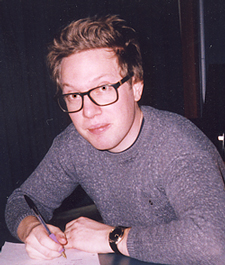

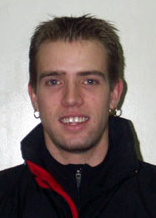
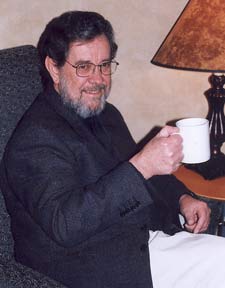

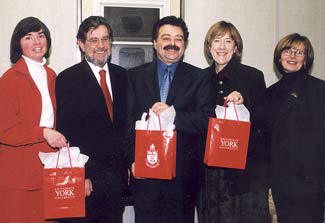
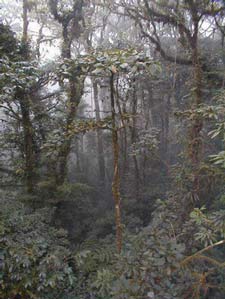
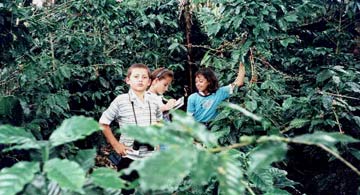
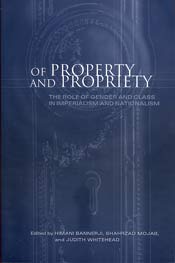
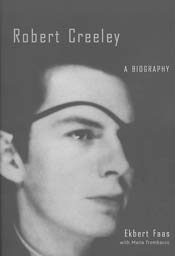
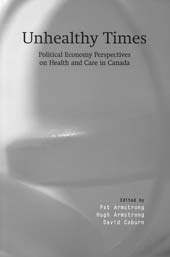
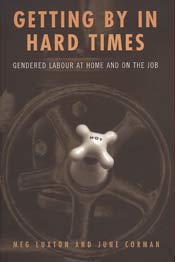
.jpg)
.jpg)
